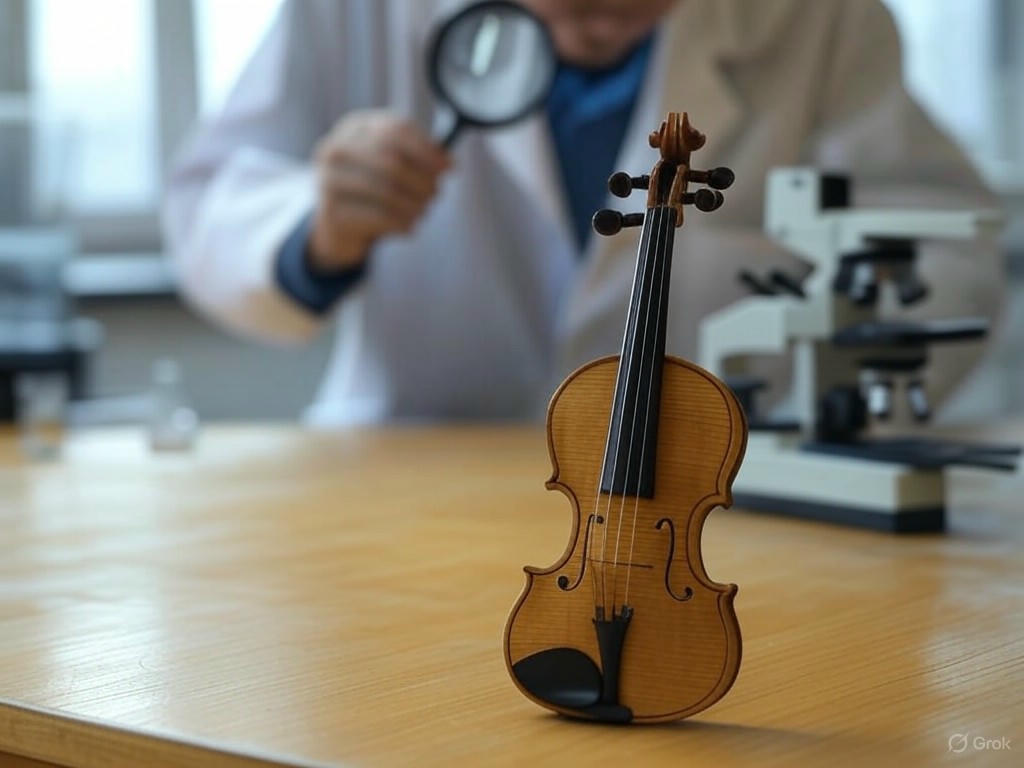Tiny Tunes: Unveiling the World’s Smallest Violin
In a groundbreaking feat of nanotechnology, researchers at a leading UK university have crafted an extraordinary marvel: a violin so small it could fit on the tip of a pin. Measuring a mere 35 microns in length and 13 microns in width, this microscopic instrument is tinier than a single strand of human hair, which typically spans between 17 and 180 microns. This remarkable creation, developed by a team of physicists, showcases the incredible precision and innovation possible at the intersection of science and art.
The miniature violin, invisible to the naked eye, was constructed using advanced techniques in nanofabrication. The team employed cutting-edge tools to etch and assemble the instrument’s delicate components, replicating the iconic shape of a traditional violin complete with strings and a bridge. While it may not produce music in the conventional sense, the tiny structure vibrates at specific frequencies when stimulated by precise energy inputs, mimicking the acoustic principles of its full-sized counterpart. This achievement is not just a whimsical experiment; it represents a significant step forward in understanding how materials behave at the smallest scales. The project opens up new possibilities for studying sound waves and vibrations in nanotechnology, potentially leading to innovations in fields like telecommunications and sensor technology.
Beyond its scientific implications, the creation of this minute musical instrument captures the imagination. It serves as a symbol of human ingenuity, blending creativity with technical prowess. The researchers behind the project humorously acknowledge the cultural reference to ‘playing the world’s smallest violin’ as a metaphor for mock sympathy, but their work is anything but trivial. Their efforts highlight how far science has come in manipulating matter at the atomic level, pushing boundaries that were once thought impossible. This tiny violin could inspire future generations of scientists and engineers to think smaller, dream bigger, and explore uncharted territories of discovery.
As we marvel at this microscopic masterpiece, it’s worth pondering what other wonders lie ahead in the realm of nanotechnology. Could we one day see entire orchestras of nano-instruments, or perhaps practical applications that revolutionize how we interact with sound and vibration? For now, this diminutive violin stands as a testament to the power of curiosity and precision, reminding us that even the smallest creations can resonate with profound significance. The team plans to continue refining their techniques, aiming to explore other miniature designs while delving deeper into the physics of nanoscale acoustics. Their work is a harmonious blend of science and imagination, proving that even the tiniest innovations can strike a powerful chord.


